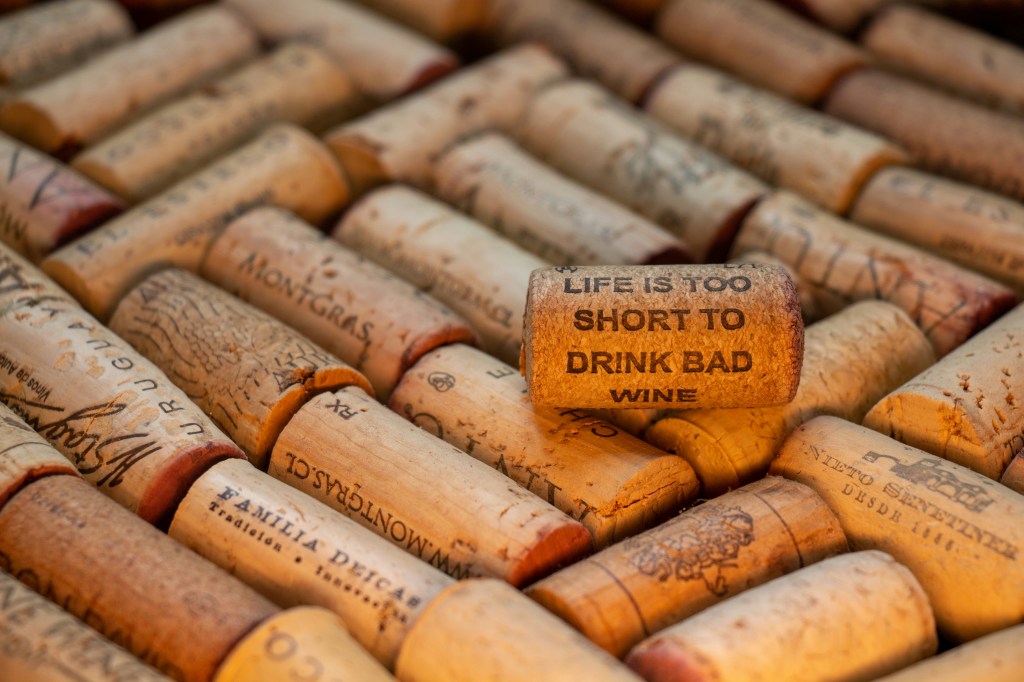- The Precarious Life of a Bottle: Importance of Detecting Spoiled Wine
- Visual Clues: Changes in Appearance That Are Hard to Hide
- Aroma and Taste: The Telltale Signs in the Glass
- Cork and Seal Issues: The Unsung Guardians of Your Wine’s Integrity
- Storage Conditions: The Unseen Culprit
- Prevention and Solutions: The Proactive Collector’s Guide
- Conclusion: A Call to Vigilance

Wine has long been considered a nectar of the gods, a drink that transcends occasions from life-changing celebrations to quiet, introspective moments at home. But in that space between a bottle’s cork popping and the last drop, lies a window of time. How do we know when that time, so filled with expectation, is over?
Learning to identify when your wine has gone bad is a crucial skill for any enthusiast. It can save a dinner party, prevent accidentally consuming a vinegar-esque blend, and ultimately protect your investment. In this comprehensive guide, we will discuss the nuanced art of distinguishing good wine from spoiled.
The Precarious Life of a Bottle: Importance of Detecting Spoiled Wine
The timeline for wine’s peak enjoyment is influenced by various factors: how it was made, when it was bottled, and, critically, how it was stored. When wine goes bad, it’s often due to improper care along its path to your glass. Detecting spoilage early is not just about your palate; it’s a barometer for the care your wine has received and an insight into its life before you.
Not only is detecting bad wine essential for quality assurance, but it also ensures that you, the consumer, can fully enjoy the characteristics that make each bottle unique. For wine connoisseurs, the ability to sense a spoiled wine sets the stage for a true gustatory experience, unhampered by any aberrations.
Visual Clues: Changes in Appearance That Are Hard to Hide
A wine’s visual presentation is the first cue to its health. Here’s how you can decipher these important signs:
Color Changes
A noticeable change in color can hint at wine spoilage. For example, red wines may develop a brownish tinge when over-oxidized, or white wines may turn orange or brown when they’ve become overly ‘off.’ Such shifts typically indicate that the wine has been exposed to extensive air and that the reactions between the acids, tannins, and phenolic compounds are not ideal.
Sediment and Clarity
Residual sediment is fine; however, if you notice a significant amount in a bottle of white wine or a young, fine red, this could mean that the wine is either reaching its limit or was not ideally processed. Excess sediment can be a sign that the wine has not been filtered properly prior to bottling. Furthermore, a normally clear wine that becomes hazy may be an indicator of microbial growth, a sure sign of spoilage.
Bubbles
If your still wine unexpectedly offers a fizzy greeting, it likely started a spontaneous fermentation within the bottle due to contamination, indicating a significant issue with sanitation or closure integrity at the winery.
Aroma and Taste: The Telltale Signs in the Glass
A wine’s bouquet and palate are where enthusiasts engage the most. If something is amiss, you’ll know it immediately.
Off Aromas
The human nose is a sensitive organ, capable of detecting minute traces of volatile compounds. A surefire way to tell your wine has gone bad is by smelling it. If you pick up a scent of vinegar – acetic acid – or musty, damp cardboard – likely due to cork taint (TCA) – then you have a spoiled bottle on your hands.
Off Flavors
Similar to aromas, off-flavors such as oxidized notes, resulting from a wine’s exposure to oxygen, or astringent flavors, often a result of a wine’s premature aging, can be detected upon the first sip. These not only reduce the wine’s pleasure but are a clear indicator of wine spoilage.
Cork and Seal Issues: The Unsung Guardians of Your Wine’s Integrity
The closure of wine bottles, be it cork, screwcap, or other, is pivotal in the preservation of the wine. When these become compromised, the wine’s life span is significantly reduced.
Leaks and Seepage
Any evidence of wine escaping from under the cork or cap is a clear sign that the seal has been broken, compromising the wine’s condition. This also presents a high risk of contamination, most often through access to oxygen and foreign elements.
Cork Taint
Cork taint is one of the most common incidents of wine spoilage. It occurs when the cork, which is a natural product, becomes infected by TCA. The wine will have an unmistakable musty or moldy odor and the flavor profile will be dull, thereby affecting the wine’s overall drinking experience.
Oxidation
Wine needs to breathe, but not too much. When oxygen interacts with the wine, it begins to degrade the wine over time. If you notice a bottle showing signs of premature aging like browning, it is likely oxidized.
Storage Conditions: The Unseen Culprit
Proper storage is the unsung hero in the wine world. The balance of variables like temperature, humidity, and light can preserve a bottle’s integrity or contribute to its untimely demise.
Light Strikes
Ultraviolet light, whether from the sun or artificial sources, can skunk a wine tasting experience. It can cause premature aging by interacting with the complex compounds in the wine. Always store wine in a dark place and away from any UV rays.
Temperature Extremes
Temperature fluctuations can be incredibly hard on wine. Ideally, wines should be stored in consistent, cool temperatures, away from heat sources and extreme cold. When wines experience these temperature swings, the expansion and contraction can cause corks to move, allowing in harmful oxygen.
Humidity Levels
Humidity, or the lack thereof, can also spoil wine. A dry environment can cause corks to dry out, allowing for oxygen to seep into the bottle. Too much humidity can lead to mold and potential TCA contamination, creating a delicate balance in storing wine optimally.
Prevention and Solutions: The Proactive Collector’s Guide
A large part of the enjoyment in wine comes from the anticipation of its consummation. Here are steps to prevent spoilage before it happens:
Proper Storage Techniques
Invest in a wine cooler or cellar if you can. If not, store the wine in a consistent, cool, and dark place on its side to keep the cork moist and airtight.
Keep a Watchful Eye
Be vigilant. Inspect the bottle’s integrity and watch for any of the signs we’ve discussed. If you’re not sure, it’s always better to err on the side of caution and open the bottle to investigate further.
When to Discard
If in doubt, throw it out. Chances are that a wine with noticeable spoilage is not going to taste better over time. It’s not an easy decision to make, discarding wine, but it ensures you only savor the best quality bottles.
Conclusion: A Call to Vigilance
Detecting spoilage in wine is both an art and science. It takes a trained eye, nose, and palate, but also a proactive approach to storing and handling your bottles. By understanding and being aware of the signs your wine has gone bad, you can ensure that your wine-drinking experiences are consistently delightful.
Remember, your wine’s quality is largely in your hands. Whether you’re a collector, enthusiast, or occasional sipper, this knowledge will only enhance your enjoyment of one of life’s great pleasures. Stay vigilant, learn the signs, and make every bottle count. Your palate will thank you.







Leave a comment